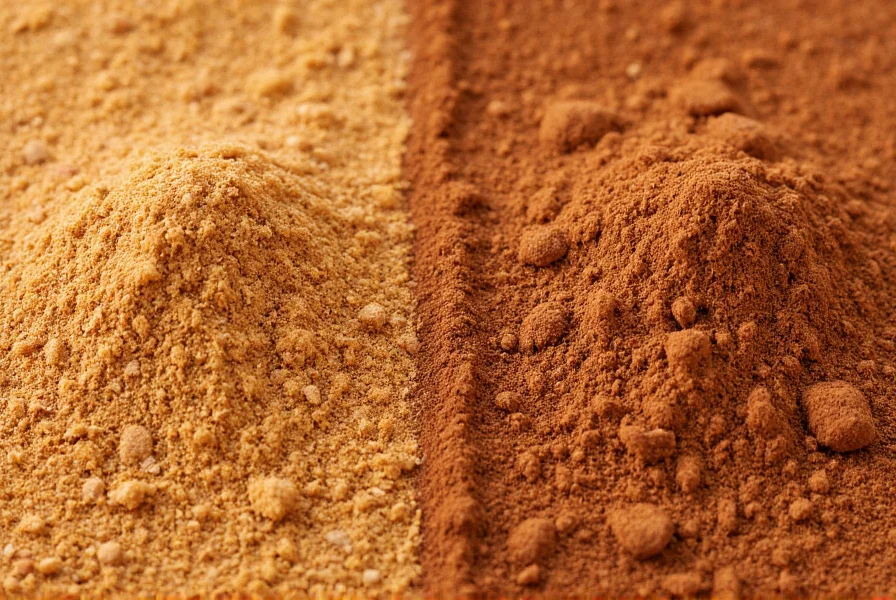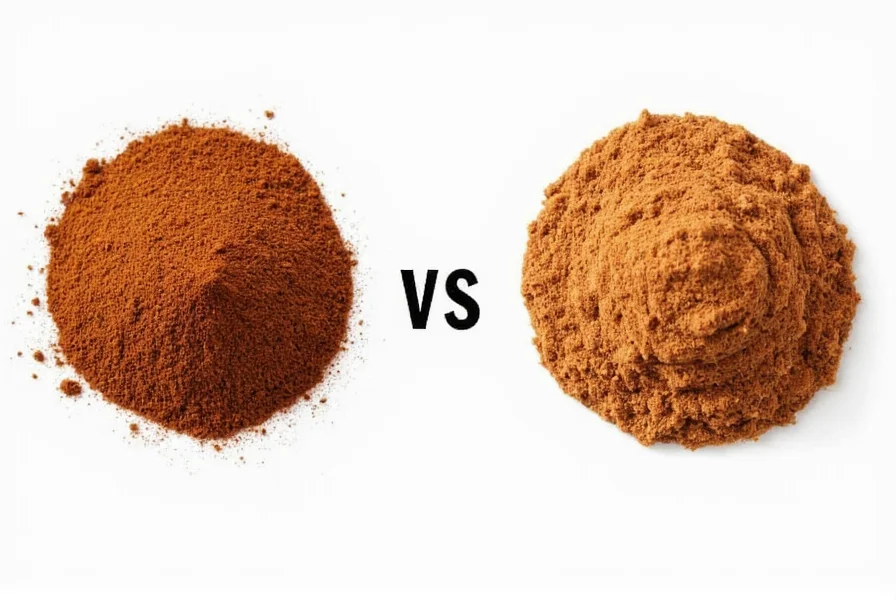When comparing ceylon vs regular cinnamon, understanding their fundamental differences is crucial for both culinary excellence and health considerations. Most consumers don't realize they're typically purchasing Cassia when they buy "cinnamon" from supermarkets. This distinction matters significantly for regular users, particularly those incorporating cinnamon into daily wellness routines or managing specific health conditions.
Understanding Cinnamon Varieties
The term "cinnamon" refers to two primary varieties with distinct botanical origins. Ceylon cinnamon, often labeled as "true cinnamon," originates from Sri Lanka (formerly Ceylon) and southern India. Regular cinnamon, commonly called Cassia, primarily comes from China, Indonesia, and Vietnam. Despite sharing the cinnamon name, these spices differ substantially in composition, flavor, and health implications.
Physical and Sensory Characteristics
Visually distinguishing ceylon vs regular cinnamon reveals immediate differences. Ceylon cinnamon forms delicate, multi-layered scrolls resembling cigar tubes, with a light tan color and fragile texture. Cassia cinnamon creates thick, hard single-layer sticks with a dark reddish-brown hue. When ground, Ceylon powder appears lighter and finer than the coarser, darker Cassia powder.
Flavor profiles further differentiate these varieties. Ceylon cinnamon offers a complex, nuanced taste with sweet, citrusy notes and subtle warmth. Cassia delivers a more intense, robust flavor with pronounced spiciness and less complexity. Professional chefs often prefer Ceylon for desserts where delicate flavor balance matters, while Cassia works well in bold recipes like chai or spice cakes.
| Characteristic | Ceylon Cinnamon | Cassia Cinnamon |
|---|---|---|
| Scientific Name | Cinnamomum verum | Cinnamomum cassia |
| Origin | Sri Lanka, Southern India | China, Indonesia, Vietnam |
| Stick Formation | Multiple thin layers (like cigar roll) | Single thick, hard layer |
| Coumarin Content | Approximately 0.017g/kg | Approximately 63.34g/kg |
| Flavor Profile | Sweet, delicate, citrus notes | Strong, spicy, intense |
Health Implications: The Critical Coumarin Difference
The most significant difference between ceylon vs regular cinnamon involves coumarin content—a natural compound that can cause liver damage in sensitive individuals when consumed in excess. Cassia contains substantially higher coumarin levels (up to 63 times more than Ceylon), making regular consumption potentially problematic.
European Food Safety Authority guidelines recommend a maximum daily coumarin intake of 0.1 mg per kilogram of body weight. For a 150-pound person, this equals approximately 6.8 mg daily. Just one teaspoon of Cassia cinnamon may contain 5-12 mg of coumarin, potentially exceeding safe limits with regular use. Ceylon cinnamon's minimal coumarin content makes it the preferred choice for daily consumption, especially for children, pregnant women, or those with liver conditions.
Both varieties offer similar antioxidant and anti-inflammatory benefits, but the coumarin concern makes Ceylon the safer option for regular use. Research published in Food and Chemical Toxicology confirms Ceylon's significantly lower coumarin levels, supporting its designation as the preferable choice for consistent dietary inclusion.
Culinary Applications and Practical Considerations
When deciding between ceylon vs regular cinnamon for cooking, consider both flavor compatibility and usage frequency. Ceylon's delicate profile shines in dishes where cinnamon should complement rather than dominate—think French toast, custards, or fruit compotes. Its subtlety works particularly well in beverages like coffee or hot chocolate where overpowering spice would be undesirable.
Cassia's robust flavor makes it suitable for recipes requiring strong spice presence, such as gingerbread, pumpkin pie, or Indian curries. Its lower cost and wider availability explain why most commercial products use Cassia. However, for daily use in smoothies, oatmeal, or health-focused recipes, Ceylon provides comparable benefits without the coumarin concerns associated with regular consumption of Cassia.
Price differences reflect their production realities. Ceylon typically costs 5-10 times more than Cassia due to more labor-intensive harvesting methods and limited growing regions. This explains why most grocery store "cinnamon" is actually Cassia—consumers rarely notice the flavor difference in processed foods, making Cassia the economical choice for manufacturers.

Identifying Authentic Ceylon Cinnamon
Telling ceylon vs regular cinnamon apart requires attention to physical characteristics. Authentic Ceylon sticks form thin, tightly rolled multiple layers that feel brittle and crumble easily when bent. Cassia sticks are thick, hard, and difficult to break. When purchasing ground cinnamon, check labels for "Cinnamomum verum" (Ceylon) versus "Cinnamomum cassia" or simply "cinnamon" (typically Cassia).
Reputable specialty spice merchants usually specify the variety, while mainstream grocery stores rarely do. If the price seems too good to be true for "premium" cinnamon, it's likely Cassia. For health-conscious consumers seeking the benefits of daily cinnamon consumption without coumarin risks, verifying the variety becomes essential.
Practical Recommendations for Consumers
For occasional culinary use in robust recipes, Cassia provides excellent flavor at reasonable cost. However, for regular consumption—especially in health-focused applications like daily smoothies, supplements, or therapeutic uses—Ceylon cinnamon represents the safer choice. Those managing blood sugar levels or incorporating cinnamon into daily wellness routines should prioritize Ceylon to avoid potential coumarin accumulation.
When shopping for ceylon vs regular cinnamon, look for specialty spice retailers or health food stores that explicitly label the variety. Online retailers often provide clearer differentiation than physical stores. Consider maintaining both varieties: Ceylon for daily use and delicate applications, Cassia for occasional bold recipes where cost matters more than coumarin content.

Conclusion
Understanding the differences between ceylon vs regular cinnamon empowers consumers to make informed choices based on both culinary preferences and health considerations. While Cassia dominates the market due to lower cost and stronger flavor, Ceylon's superior safety profile for regular consumption makes it worth the premium price for health-conscious users. The choice ultimately depends on intended usage frequency, flavor requirements, and health priorities—knowledge that transforms a simple spice decision into an informed culinary and wellness choice.
Frequently Asked Questions
Is Ceylon cinnamon better than regular cinnamon for daily consumption?
Yes, Ceylon cinnamon is significantly better for daily consumption due to its much lower coumarin content. While Cassia contains potentially harmful levels of coumarin that can accumulate with regular use, Ceylon's minimal coumarin levels present negligible risk, making it the safer choice for consistent daily intake, especially for children, pregnant women, or those with liver conditions.
How can I tell if my cinnamon is Ceylon or Cassia?
Examine the physical characteristics: Ceylon forms thin, multi-layered sticks that are light tan and brittle, while Cassia creates thick, single-layer sticks that are dark reddish-brown and hard. When ground, Ceylon appears lighter and finer. Check product labels for "Cinnamomum verum" (Ceylon) versus "Cinnamomum cassia" or simply "cinnamon" (typically Cassia). Specialty spice merchants usually specify the variety, while mainstream stores rarely do.
Does Ceylon cinnamon have the same health benefits as regular cinnamon?
Yes, both varieties offer similar antioxidant, anti-inflammatory, and potential blood sugar-regulating benefits. The primary difference lies in coumarin content, not the beneficial compounds. Ceylon contains comparable levels of cinnamaldehyde and other beneficial compounds but with dramatically lower coumarin, making its health benefits safer to access through regular consumption without coumarin-related risks.
Why is Cassia cinnamon more common than Ceylon?
Cassia dominates 90% of the U.S. market primarily due to lower production costs, higher yield per tree, and more robust flavor that withstands processing. It's easier to grow in various climates, requires less labor-intensive harvesting, and has a longer shelf life. Most consumers can't distinguish the flavor difference in processed foods, making Cassia the economical choice for manufacturers despite Ceylon being considered "true" cinnamon.
Can I substitute Ceylon for Cassia in recipes?
Yes, but with flavor adjustments. Use 1.5-2 times more Ceylon than Cassia to achieve similar intensity, as Ceylon's flavor is more delicate. In recipes where cinnamon plays a supporting role (like baked goods), substitution works well without adjustment. For dishes where cinnamon is a featured flavor (like chai or cinnamon rolls), you may need to increase the Ceylon quantity. The substitution works best in delicate applications where Cassia's intensity might overwhelm other flavors.











 浙公网安备
33010002000092号
浙公网安备
33010002000092号 浙B2-20120091-4
浙B2-20120091-4